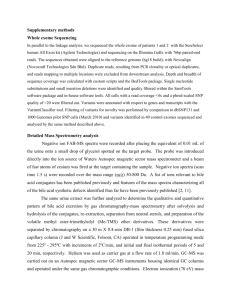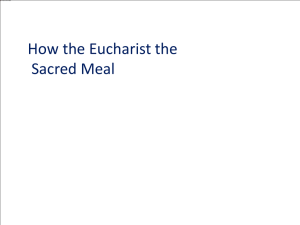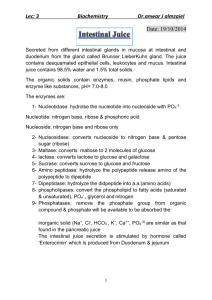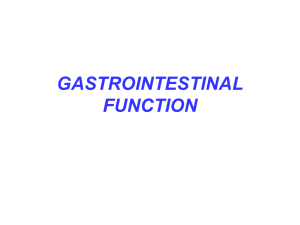Updated Bile Acid Testing Protocol
advertisement
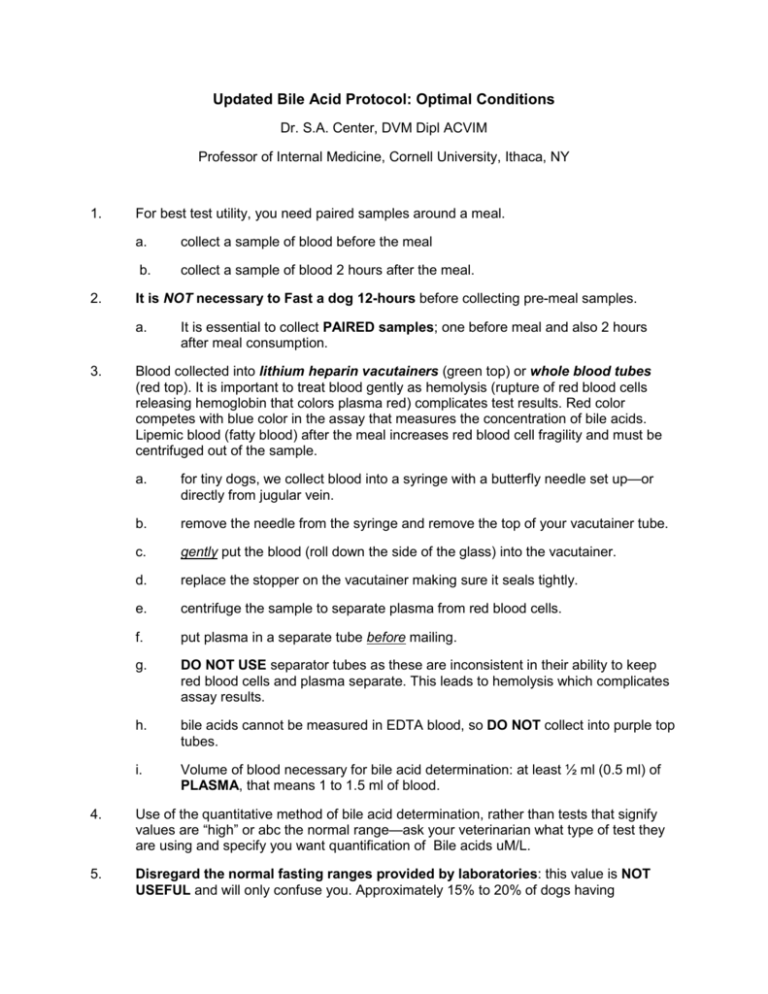
Updated Bile Acid Protocol: Optimal Conditions Dr. S.A. Center, DVM Dipl ACVIM Professor of Internal Medicine, Cornell University, Ithaca, NY 1. 2. For best test utility, you need paired samples around a meal. a. collect a sample of blood before the meal b. collect a sample of blood 2 hours after the meal. It is NOT necessary to Fast a dog 12-hours before collecting pre-meal samples. a. 3. It is essential to collect PAIRED samples; one before meal and also 2 hours after meal consumption. Blood collected into lithium heparin vacutainers (green top) or whole blood tubes (red top). It is important to treat blood gently as hemolysis (rupture of red blood cells releasing hemoglobin that colors plasma red) complicates test results. Red color competes with blue color in the assay that measures the concentration of bile acids. Lipemic blood (fatty blood) after the meal increases red blood cell fragility and must be centrifuged out of the sample. a. for tiny dogs, we collect blood into a syringe with a butterfly needle set up—or directly from jugular vein. b. remove the needle from the syringe and remove the top of your vacutainer tube. c. gently put the blood (roll down the side of the glass) into the vacutainer. d. replace the stopper on the vacutainer making sure it seals tightly. e. centrifuge the sample to separate plasma from red blood cells. f. put plasma in a separate tube before mailing. g. DO NOT USE separator tubes as these are inconsistent in their ability to keep red blood cells and plasma separate. This leads to hemolysis which complicates assay results. h. bile acids cannot be measured in EDTA blood, so DO NOT collect into purple top tubes. i. Volume of blood necessary for bile acid determination: at least ½ ml (0.5 ml) of PLASMA, that means 1 to 1.5 ml of blood. 4. Use of the quantitative method of bile acid determination, rather than tests that signify values are “high” or abc the normal range—ask your veterinarian what type of test they are using and specify you want quantification of Bile acids uM/L. 5. Disregard the normal fasting ranges provided by laboratories: this value is NOT USEFUL and will only confuse you. Approximately 15% to 20% of dogs having fasting>post-prandial (after meal) bile acid values due to individual differences in the rate of stomach emptying and intestinal motility and food consumption. DO NOT DO THIS TEST after a couple of tablespoons of food—you need to stimulate stomach contraction and a meal is more reliable. 6. Based on extensive work in our laboratory with bile acids: dogs with plasma or serum bile acid concentration > 25 uMol/L are ABNORMAL. It does not matter if this is FASTING or POSTPRANDIAL (2 hours after a meal). Some labs have determined what they believe are normal ranges, the > 25 umol/L value was determined using data derived from a spectrum of dogs with LIVER BIOPSIES which confirms presence or absence of liver disease (so we know who is abnormal and who is normal) rather than just a range of bile acid values from many animals where the status of the liver remains unknown.


